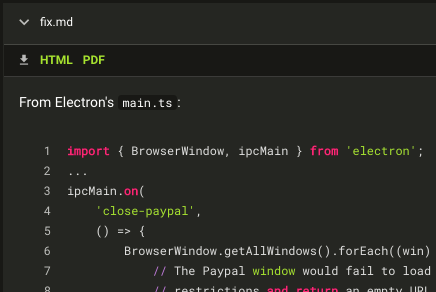Clip 1 2 3 – Snippet Management
Create new snippets from the clipboard or via the easy-to-use snippet editor. As mentioned, besides code snippets Snippet Monkey supports plain text, images, date and time (your choice of format), nested snippets, and cursor location commands. Snippet Monkey isn’t 100% free but rather shareware – should you choose to pay it’s only $12 though. So, if you ever change your mind and want to “un”trim the clip, repeat Steps 2, 3 and 4 but slide the trim indicator back to its original location. To adjust the length of time that a still (photo) appears in the movie, click on the still, click the Edit tab, and in the Duration drop-down box, select the length of time that you want the. Real people just like you are kissing the idea of punching the clock for someone else goodbye, and embracing a new way of living. The internet economy is exploding, and there are literally THOUSANDS of great earnings opportunities available right now, all just one click away.
Summary
Cuts out a portion of a raster dataset, mosaic dataset, or image service layer.
Usage
This tool allows you to extract a portion of a raster dataset based on a template extent. The clip output includes any pixels that intersect the template extent. To extract a portion of a feature dataset, use the Clip tool in the Analysis toolbox.
The clipped area is specified either by a rectangular envelope using minimum and maximum x- and y-coordinates or by using an output extent file. If the clip extent specified is not aligned with the input raster dataset, this tool verifies that the proper alignment is used. This may cause the output to have a slightly different extent than specified in the tool.
An existing raster or vector layer can be used as the clip extent. If you are using a feature class as the output extent, you have the option to clip the raster by the minimum bounding rectangle of the feature class or by the polygon geometry of the features. If clipping geometry is used, the pixel depth of the output may be promoted. Therefore, make sure that the output format can support the proper pixel depth.
You can also use the selected features within the display as the clipping extent. If a feature in the feature class is selected and Use Input Features for Clipping Geometry is checked (clipping_geometry is set to ClippingGeometry in Python), the output clips out the areas that are selected. If a feature in the feature class is selected but Use Input Features for Clipping Geometry is not checked (set to NONE in Python), the output clips out the minimum bounding rectangle for that feature.
You can save your output to BIL, BIP, BMP, BSQ, DAT, Esri Grid , GIF, IMG, JPEG, JPEG 2000, PNG, TIFF, MRF, CRF, or any geodatabase raster dataset.
The extent values must be in the same spatial coordinates and units as the raster dataset.
This tool supports multidimensional raster data. To run the tool on each slice in the multidimensional raster and generate a multidimensional raster output, be sure to save the output to CRF.
Supported input multidimensional dataset types include multidimensional raster layer, mosaic dataset, image service, and CRF.
Syntax
| Parameter | Explanation | Data Type |
The raster dataset, mosaic dataset, or image service to be clipped. | Mosaic Dataset; Mosaic Layer; Raster Dataset; Raster Layer | |
rectangle | The four coordinates that define the extent of the bounding box used to clip the raster in this order: X-Minimum, Y-Minimum, X-Maximum, Y-Maximum. If the clip extent specified is not aligned with the input raster dataset, the Clip tool verifies that the proper alignment is used. This may cause the output to have a slightly different extent than specified in the tool. | Envelope; Feature Class; Feature Layer |
The name, location, and format of the dataset being created. Make sure that it can support the necessary bit depth. When storing the raster dataset in a file format, you need to specify the file extension:
When storing a raster dataset in a geodatabase, do not add a file extension to the name of the raster dataset. When storing your raster dataset to a JPEG file, a JPEG 2000 file, a TIFF file, or a geodatabase, you can specify a Compression Type and Compression Quality in the geoprocessing Environments. | Raster Dataset | |
in_template_dataset | A raster dataset or feature class to use as the extent. The clip output includes any pixels that intersect the minimum bounding rectangle. If a feature class is used as the output extent and you want to clip the raster based on the polygon features, set the clipping_geometry parameter to ClippingGeometry. This option may promote the pixel depth of the output. Therefore, make sure that the output format can support the proper pixel depth. | Raster Layer; Feature Layer |
nodata_value | The value for pixels to be considered as NoData. | String |
clipping_geometry | Specifies whether the data will be clipped to the minimum bounding rectangle or to the geometry of the feature class.
| Boolean |
(Optional) | Specifies the extent to use in the clipping output.
| Boolean |
Code sample
This is a Python script sample for the Clip tool using clipping_geometry.
Environments

Licensing information
- Basic: Yes
- Standard: Yes
- Advanced: Yes
Related topics
Why reinvent the wheel? And by extension, why keep re-typing or copy/pasting commonly used pieces of code over and over again?
Copying and pasting pieces of code into text files are disorganized and wastes your precious time. Instead, you can use code snippets to managers those code snippets you use on a regular basis. These applications let you save, organize, and call upon your code snippets whenever you need them – for practically all of the major programming languages.
Snippet Download Free
These applications will make your development life so much easier. So peruse through the list, see which one(s) would fit your workflow.
jCodeCollector
jCodeCollector is a free cross-platform application that helps you manage your code snippets. It is written in Java.
Download Page: jCodeCollector →
Platform: Windows, Mac OS X, Linux
Features:
- More than 25 languages supported
- Store, tag and comment your snippets
- Quickly find the code you need via search
Snippet Manager
Snippet Manager is a free utility for managing your code snippets in a variety of languages: VB, C++, C#, Java, SQL, ASP, PHP, HTML, even COBOL, Assembler, and Fortran.
You can also use Snippet Manager to manage plain ASCII text data. With the developer-focused search tool, you can find the code you need by using regular expressions or simple search criteria: language, category, dependencies, keywords or the actual code that you are looking for. You can also publish your snippets online for your personal or company use, and password-protect them so only those you want can access them.
Download Page: Snippet Manager →
Platform: Windows
Features:
- Lightweight; no setup needed
- 37 languages are supported
- Search tool for developers
- Publish your snippets on the Internet and optionally password-protect your code
Snippely
Snippely is a free basic text and code organizational tool. By using it, you can save, organize and retrieve your snippets in one convenient location. Snippely is built on the Adobe AIR platform, so after installing the cross-platform AIR, you can use it on all modern operating systems.
Download Page: Snippely →
Platform: Adobe AIR (cross-platform)
Features:
- Snips will be syntax highlighted according to the language selected
- Snips are sortable so you can organize your snippet however you want
- No saving needed – everything is saved to a local database as you work
Code Bank
Code Bank is a free code snippet manager with support for a local database as well as a shared database. With the serverside application, you can share a code snippet library between multiple users. It has syntax highlighting for many languages and a simple revision history with a compare viewer for seeing side-by-side changes between two revisions. Code Bank is built on the Adobe AIR platform, so after installing the cross-platform AIR, you can use it on all modern operating systems.

Download Page: Code Bank →
Platform: Adobe AIR (cross-platform)
Features:
- Syntax highlighting for multiple languages including C++, ActionScript, Flex, HTML, SQL, and more
- Simple revision history with a compare viewer so you can see the changes side-by-side between two revisions
Snippet Monkey
Snippet Monkey saves you countless hours by allowing you to create shortcuts for your snippets as well as phrases you frequently type. Create new snippets from the clipboard or via the easy-to-use snippet editor. As mentioned, besides code snippets Snippet Monkey supports plain text, images, date and time (your choice of format), nested snippets, and cursor location commands.
Snippet Monkey isn’t 100% free but rather shareware – should you choose to pay it’s only $12 though.
Download Page: Snippet Monkey →
Platform: Mac OS X
Features:
- Snippets can contain any combination of: text, images, date and time in a format of your choice, nested snippets, cursor location commands
- Only Typing accelerator with support for Sniplets
- Supports disabling on a per application basis
- Easily create a snippet from the contents of the clipboard
What Applications Do You Use?
Clip 1 2 3 – Snippet Management System
Your turn: what desktop applications do you use for managing your code snippets? Which applications from this list? Feel free to share your favorites in the comments section below.